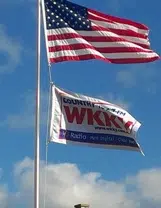Step inside of an in-game huddle for the Purdue Boilermakers men’s basketball team, and the man with the clipboard diagramming the play the Boilermakers will run on their next offensive trip often isn’t coach Matt Painter.
The 27-year-old former Purdue point guard P.J. Thompson’s official title with the Boilermakers is director of player development. In practice, though, he serves as Purdue’s offensive coordinator, a role Painter innovated into the college game around a decade ago that has slowly spread to programs around the country. Thompson calls all the team’s sets from the sideline, writing calls down on a whiteboard he holds up after made baskets and sometimes leading huddles for set plays in key moments of the game. It’s a heavy role Painter has entrusted a staff member with dating back to around when Thompson was recruited to Purdue as a player in 2014, one that has since been occupied by future head coaches like Greg Gary (Mercer) and Micah Shrewsberry (Notre Dame).
Painter’s initial idea for the shift came from football, where he was fascinated by teams’ ability to relay in long play calls quickly and get everyone on the same page. He was also looking to implement more actions offensively without overcomplicating things for his players. He landed on a coordinator-like system with a staffer (in this case, Thompson) handling all things offense, helping implement the Boilermakers’ deep playbook built on a system of code words that allow him to easily communicate calls in game.

Matt Blewett/USA TODAY Sports
“I just felt like I was making some decisions through subbing, through battling with officials, in play calling, to where they were kind of play calls out of emotion, if I’m framing that the best way,” Painter says. “And I just said, ‘You know what, I have to take a step back and get over myself a little bit here and do what’s best for our program, even though no one was really doing this like we are.’ I felt like I had to do that, and that was what was best for our program.”
Despite his age, Thompson was a natural fit to lead Purdue’s offense. Painter credited him after a game in December for being part of a new wave of players he recruited a decade ago whose intellect and winning attributes superseded recruiting rankings and traditional athletic upside. He blossomed into a three-year starter, helping lay the groundwork for Purdue’s incredible stretch of regular-season success of late. And after a brief stint playing professionally, Thompson returned to West Lafayette, Ind., as a graduate assistant and became director of player development prior to the 2022–23 season before being given the keys to the offense this season. Rather than the traditional system of each assistant coach being assigned scouting reports for different games and trading off, Thompson preps the offense for each game, communicates that plan to the team and then makes the calls in game.
“Although we’re all a part of the same program, the way that I speak may be different than the way that [assistant coach] Paul Lusk speaks, him being a defensive guy,” Thompson says. “When the message is clear and consistent each and every game, our guys are able to take it in and understand exactly what we’re doing. While from game to game how we try to manipulate the defense may change, our verbiage, our actions and our principles offensively stay the same.”
The process isn’t so complex. Purdue’s playbook of nearly 150 plays is built on program-specific vernacular, memorized in the offseason and digested on the fly in games. The first word is the position players align in, with subsequent ones being specific actions in the play. Thompson has a call sheet with him on the bench to work through just as a football coordinator would and communicates the calls by writing them on a small whiteboard he flashes to his team as it runs up the floor for offensive possessions. Generally Purdue will go into a game with 20 to 25 calls it likes against the defense based on advanced scouting, but the entire playbook is open, if necessary, based on adjustments made by the defense. In all, Painter says 95% of the decisions get made before the game, then get installed in game seamlessly to avoid making “emotional” decisions.

Alex Martin/Journal and Courier/USA TODAY Network
The results have been staggering. In Painter’s first 10 seasons at Purdue, the Boilermakers finished in the top 50 nationally in KenPom’s offensive efficiency metric just twice. Since, they’ve been in the top 50 for each of the past nine seasons including this one, which features the second-ranked offense nationally. They have been in the top five three other times and worse than No. 26 just once in that nine-year stretch. This season’s group, with Thompson at the controls from the sideline and defending National Player of the Year Zach Edey dominating the paint, is on pace to be the most efficient offense in Purdue history.
And with Purdue’s success has come copycats, unsurprising given the nature of the sporting world. Mike Young was an early adopter with his Wofford teams, then brought it with him to Virginia Tech, where he’s in his fifth season. Colorado State coach Niko Medved witnessed Young doing it at Wofford when he was at rival Furman, then eventually adopted it once he got to Fort Collins, Colo. Now, Boise State and New Mexico are among Colorado State’s conference rivals that have used some form of the system this season.
“What I found was, [as a coach] you’re obviously trying to manage the game, too. You’re watching everything, and it’s great to have somebody who you’re going over the game plan with, talking about different things you might want to run, to have somebody that you trust to be ready to call the next action,” Medved says.
Medved’s play-caller is assistant coach and former March hero Ali Farokhmanesh, who once was featured on the cover of Sports Illustrated for his legendary shot that helped Northern Iowa upset Kansas in the 2010 NCAA tournament. Now, Farokhmanesh is one of the most highly regarded young assistants in the sport, leading a top-20 offensive unit nationally per KenPom for a team that has spent seven of the last eight weeks in the AP Top 25.
“Niko can focus on the big picture of the game. ‘How’s our offense impacting our defense? How’s our defense impacting our offense right now? How are the guys doing? What are they feeling?’ Niko’s really good at reading rooms,” Farokhmanesh says. “It allows him to really get into it with our guys because we can run whatever play we want, if [senior guard] Joe Palmer’s not feeling good or looks like he’s a little down right now, he’s not making the shot regardless of the play call.”
One natural question, especially given current events in college football: What about sign-stealing? As football coaches get increasingly paranoid about communicating in plays, college basketball coaches are … writing down calls and holding them up on a whiteboard for all to see? The pace of the game helps ease concerns: There isn’t a five- to 10-second lull to change defensive alignments like there is presnap in football. The board allows you to communicate more complicated calls in than old-school tactics like a head tap that can be easily relayed from opposing benches. Plus, teams can use the board to try to deceive a suspecting opponent.
“I say, let them see it,” Painter says. “Every now and then we hold up a sign; we’ll write something during a [timeout] and then hold up a sign that is not the play. We give that to them two to three times a game. So if they’re really on and they’re doing that stuff, they’re going to be writing some things that are inaccurate.”
The bigger concern coaches mentioned with the system was getting everyone up to speed on the terminology, then ensuring players got in a habit of looking to the sideline for the calls. Purdue’s players dive into the vernacular starting in June when they first arrive on campus, sometimes having to put in extra work with flash cards to get up to speed in time. Colorado State uses the play-calling board during five-on-zero offensive practice and has found the habit is built fairly quickly.
But at its core, perhaps the biggest challenge in its uptake is buy-in. It takes a great deal of humility for a coach to cede control of such a central part of their program, and even more to be among the first to do it. While both coaches can send in a call to the coordinator sitting next to them, both say they rarely do. Painter might give advice, like emphasizing wanting to get Edey a post-up, but tries not to call specific plays to avoid ruining Thompson’s flow.
“I think everyone has an ego, but I think he’s one of the best coaches in college basketball and I don’t think his ego is as big as others, right?” Thompson says. “I think if his ego got in the way, there’s no way I could do what I do now. You wouldn’t have people that want to work for him the way we want to work for him.”
“You’ve gotta be able to be a little selfless and be able to step back as a head coach and be in a timeout and a camera be in there, and [Thompson’s] the one that’s [calling the play],” Painter says. “To me, I just want Purdue to win. I don’t care what anyone says about me. People dissect my convictions of the game; I don’t care. I really don’t.”


















